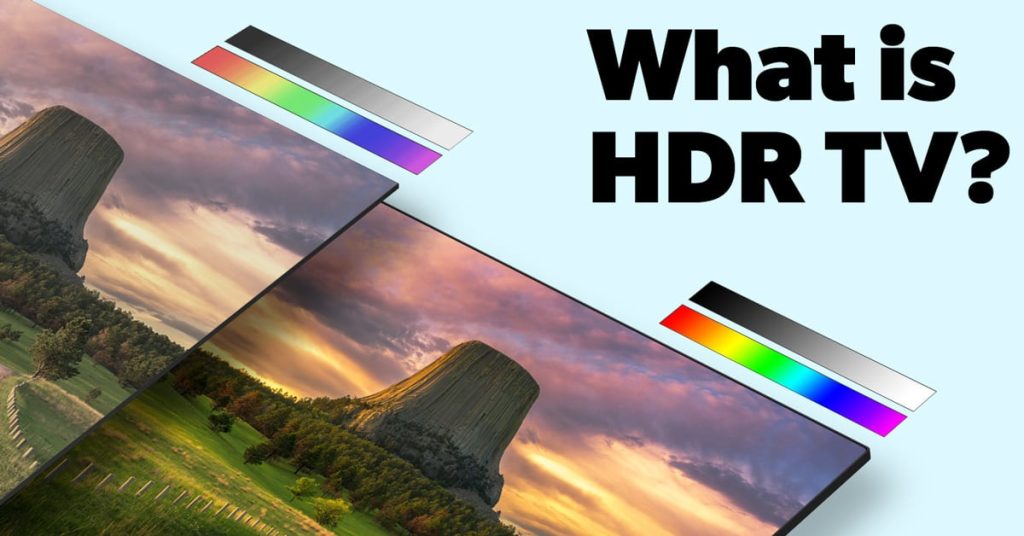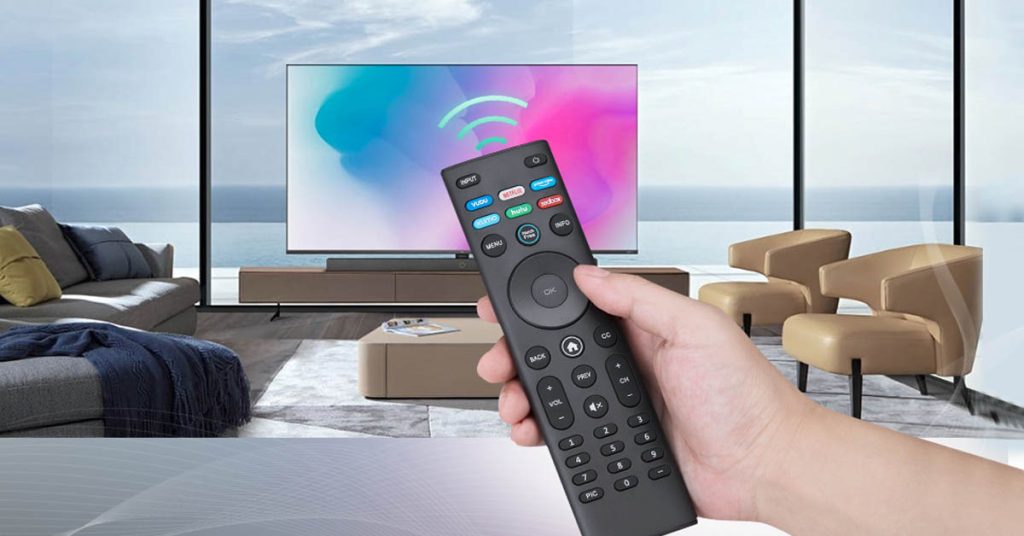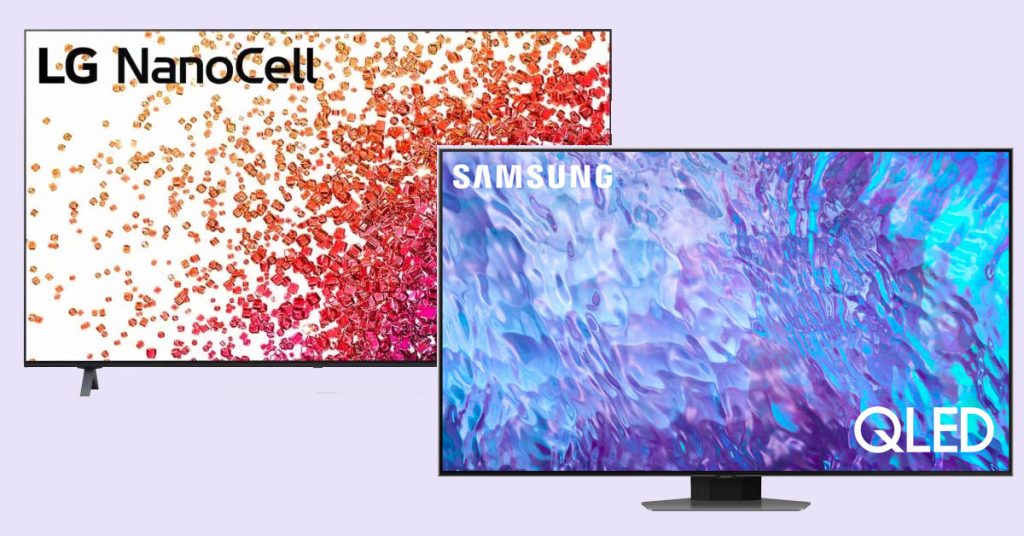What is HDMI ARC
HDMI ARC in televisions — is a connector with hdmi capabilities and plus the ARC function to send audio in both directions.
ARC stands for Audio Return Channel, the audio return channel. It’s just an option to use one cable to transmit video+audio from the receiver to the TV and audio from the TV to the receiver, soundbar, home theater system.
Basics About the HDMI Connector
HDMI itself serves to transmit video and audio in digital form. Such an interface operates with high bandwidth and is used to transmit high-definition video, which in digital form occupies a large volume.
In addition to transmitting video and audio on a single channel, HDMI was also designed to transmit what the industry calls a “handshake” from one device to another. They were originally designed to:
- copy protection and piracy prevention data;
- messages about what types of components have been connected;
- what are the capabilities of the connected components.
But the HDMI transmission system was also designed to communicate more complex messages as part of Consumer Electronics Control (CEC).
CEC allows a single remote control to control the functions of 15 hdmi connected devices. There are almost as many names for CEC as there are brands of electronics: Samsung called it “Anynet +”, LG “SimpLink” and Sony “Bravia Sync”. Unfortunately, the system has never lived up to its potential, and is often mistranslated or simply lost between components from different manufacturers.
HDMI ARC Technology in a TV
The first versions of HDMI only sent signals in one direction, from a source, such as a DVD player or game console, to a playback device, whether it was a TV, projector, or AV receiver.
But most of the time, people were watching TV, not movies from external media. The TV was turning from a display device into a signal source, which meant another cable had to be connected. Another cable made the “system more complicated”.
Nowadays, the TV is often the main source of the signal, because it is the Smart TV that has streaming services.
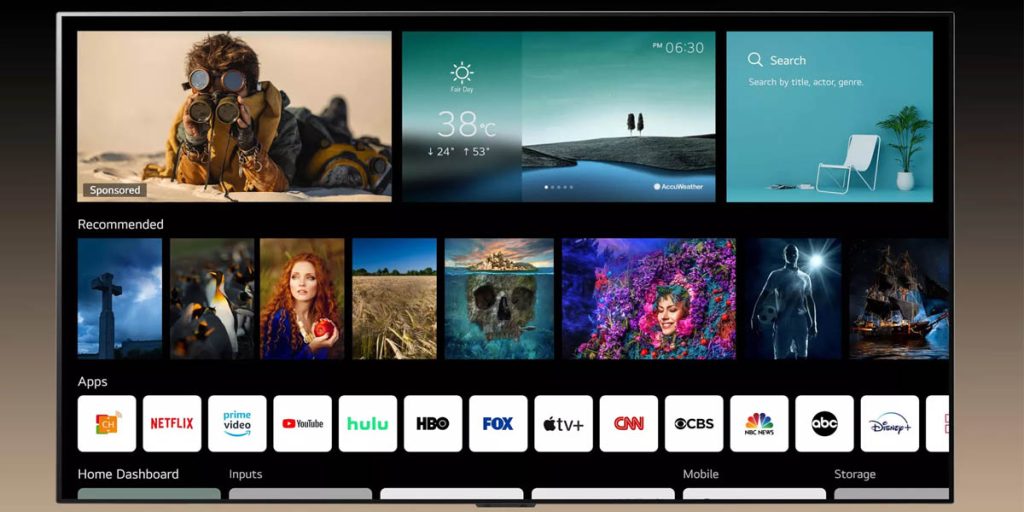
For convenience, it was necessary to build audio transmission in the cable in both directions. This feature allows the audio signal from the TV to go in the opposite direction to the receiver or the soundbar on the same wire.
But it is very important to note that this is the connection, of the audio-playing device to the correct HDMI port on the TV, the one with the coveted letters ARC on it.
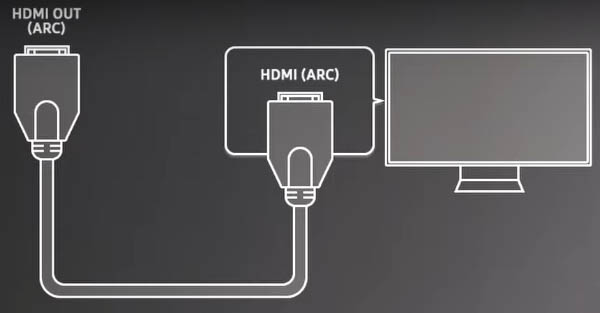
Everything was not so smooth.
Problems of protocol
The HDMI CEC remote control protocol commands were regulated in 2005 in version 1.2a. But they worked poorly at the time, and even more often within the same brand. No HDMI control for serious home theaters was out of the question.
The Samsung television not only failed to control LG home theater but could also refuse to work with the picture.
The second pairing issue was what signals were transmitted through HDMI on the main channel.
How is it, you just connect one wire and everything works?
That’s not how it worked with other brands. Denon tried to transmit digital audio between expensive devices over twisted pairs. Yamaha was not getting multichannel sound from most players over HDMI. And it was not clear whether it was the player or the receiver. The very idea of a simple unified interface was discredited by the variety of different vendors.
So it took four years between the introduction of HDMI CEC version 1.2a and the regulation of the reverse audio channel version 1.4. But the feedback between the TV and the source did appear. So let’s see what data can be transmitted over this communication channel.
The HDMI ARC protocol is analogous to the traditional digital interface for digital audio TOSlink. These are optical and coaxial cables.
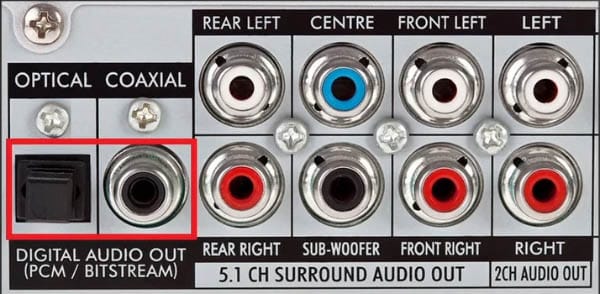
Despite the increase in bandwidth to one megabit per second, that is 2.5 times. The number of transmitted formats compared to S/PDIF has not changed.
To use HDMI ARC in most devices, you must turn on the corresponding output. Go into the TV audio settings and look for “audio output” or something similar. Change “TV speakers” to HDMI or HDMI ARC and everything starts working.

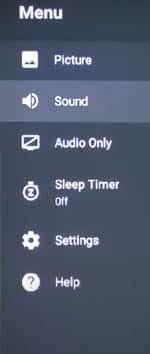
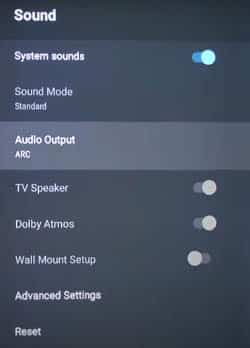
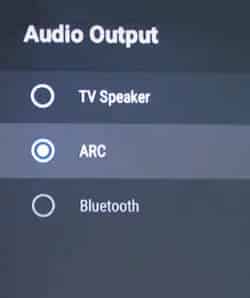
HDMI ARC Audio Formats
It remains to check in which format the TV will output sound via ARC. One of the following items in the same menu is responsible for this.
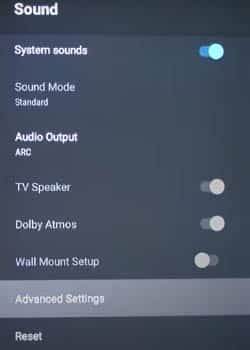
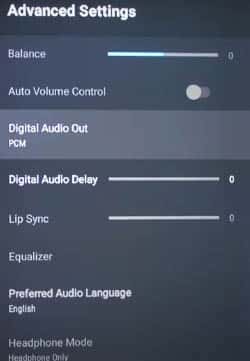
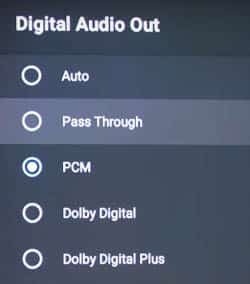
The soundtrack received by the source from the media, for example, the TV from a streaming service, can be decoded by the source itself, in this case, the TV. In this case, you will see PCM and the number of channels, such as PCM 2.0, on the receiver’s screen. Or it can be transmitted to the receiver in its original form for further decoding. Then the receiver screen will light up labeled Dolby or DTS. This is selectable in the TV settings.
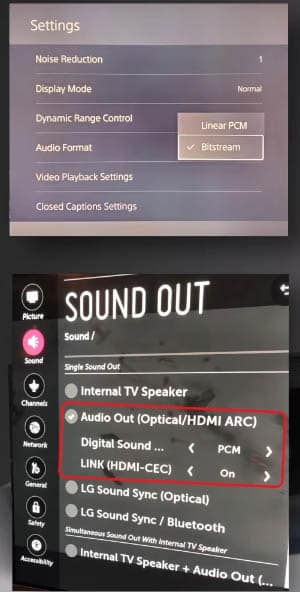
Transmission of the original signal without interference is most often called bitstream. Which is better set PCM or bitstream? I’m pretty sure it’s the receiver or soundbar that does the best job of decoding.
You need the brains of the receiver to do this job the best way possible. Also, the playback device may not support some varieties of Dolby and DTS formats. There are only three exceptions: Apple TV, PlayStation, and Xbox.
And it is not so much the high performance of these devices, as the specificity of the content presented on them. All content on these platforms is made specifically for these products, which makes them the most suitable for such tasks.
In many models, the HDMI ARC output type must be selected for each audio format separately. Start the movie with Dolby Digital, enter the menu, set the bitstream, and enjoy life.
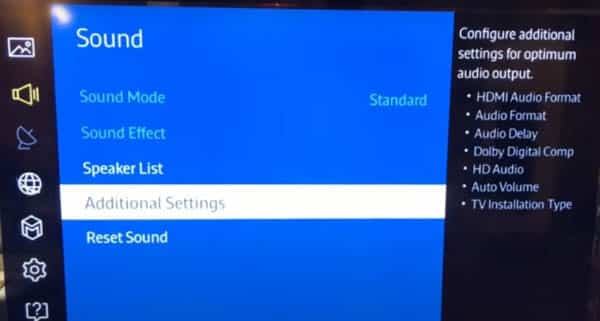
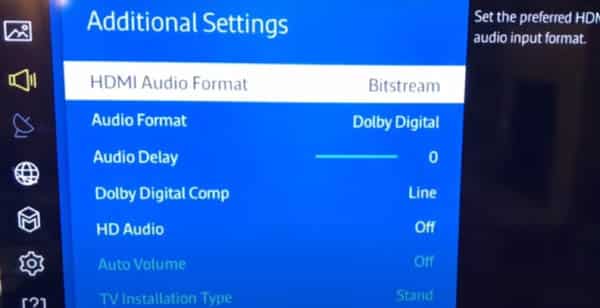
The next day you turned on the film with DTS, look, and PCM 2.0 is lit on the receiver’s screen, went back to the settings, and once again selected bitstream. Most often after that, the correct settings for DTS will be saved.
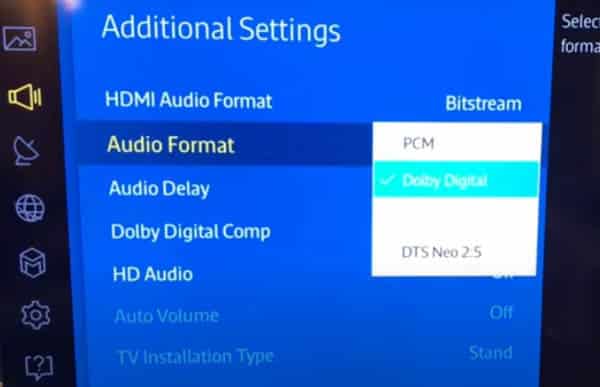
Uncompressed multi-channel sound, that is, the formats Dolby TrueHD and DTS-HD Master Audio neither on optical nor on coaxial cable or HDMI ARC not pass.
They could have been added to HDMI ARC with HDMI 1.4 certification, as these formats have been transmitted via HDMI since 1.3. Perhaps the vendors could not agree, and the licensing organization could not wait for the release of the new official format. Which means making a profit from using it.
This means that for the transmission of compressed audio from streaming services HDMI ARC fits wonderfully. But what if you download movies and play them with the built-in TV player? Don’t count on transmitting uncompressed multi-channel audio.
Can Dolby Atmos be transmitted via ARC? Yes. Due to the compatibility of all Dolby formats with each other Atmos is perfectly embedded in a Dolby Digital Plus stream. And as such, it will fit through the HDMI ARC.
It won’t do the same trick with DTX. It can only be transmitted via full HDMI from an external source or via eARC, which will be discussed below.
Connect the Sound to the TV or the Receiver?
The attentive user has a question: if the sound from the TV goes to the receiver on one wire, does it make sense to connect all the sources through the receiver? How about connecting set-top boxes and players to the TV so that the receiver always has one input selected?
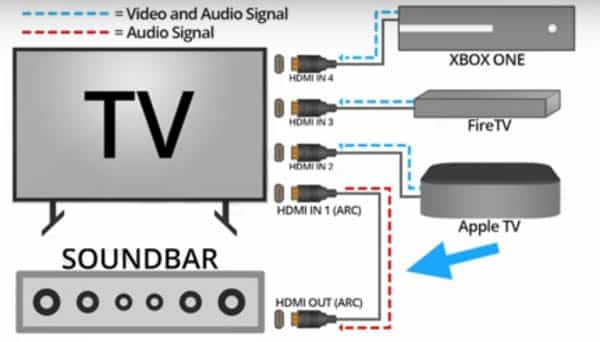
Unfortunately, it’s not that simple. When a source transmits audio to a playback device, the output parameters are most often adjusted to match the capabilities of the other.
In most cases, this means, for example, that an Apple TV connected directly to a TV will only output stereo sound because it doesn’t know that it will play the receiver and not the TV.
The second argument against this connection scheme is that the sound in this form passes through the sound path of the TV. This means that it changes to suit its capabilities. This leads to the fact that the sound loses multichannel. It was 5.1 through HDMI input, and you get 2.0 through HDMI ARC. The TV has two channels of sound, so why should it decode anything else? There are a few TV models that have the 5.1 option, but this is very rare.
Useful articles:
So, Why Do You Need HDMI ARC?
First, to get rid of the second wire, connect the TV to the receiver or soundbar.
Secondly, for your convenience in controlling the system: you turn on the TV and at the same time the receiver, and you can adjust the volume on the TV remote control without difficulty.
The main problem with HDMI ARC is that the HDMI Consortium has allowed vendors to choose which protocol components they use.
Half of the problem is that the HDMI CEC control protocol is used to activate and synchronize HDMI ARC, essentially an evolution of it, and it still has frequent bugs. HDMI CEC has almost no settings inside the TV or receiver. And if this protocol doesn’t work properly, it won’t work at all.
The other half of the problem is that the supported digital audio formats for TVs are not regulated. In theory, the TV should output any digital track without interference. That’s how the classic TOSlink digital output usually works, but it doesn’t work that way almost anywhere. Some televisions only support Dolby Digital and don’t work with DTS at all, some televisions support all and downmix all tracks to 2.0. In other words, there is a chance that ARC will either not work at all, will work unstably, or will not transmit multichannel sound.
A few examples from life. Samsung TV sets in some firmware versions spontaneously turned off the HDMI ARC output. And they did it not in an hour, but in a day when the installer was busy with absolutely different things. And to turn it back on with the remote control, which does not have a separate “menu” button, you had a long time to explain to the customer what to hold, where to go, and so on. LG TVs give out the same cases as other brands of receivers, but they have an easier menu.
In expensive AV processors, which give out many errors, it is unrealistic to use HDMI control at all.
It is a guaranteed problem to make a TV on the Android TV operating system, and these Sony and Philips and all Chinese models, to produce multi-channel sound. Since everything in such TVs is the fruit of the work of different unrelated developers: there are hardware TV settings, there are operating system settings and there are application settings. And all of them can randomly don’t fit together.
For example, the problem with the Sony TV on Android. The user got tired of resetting to factory settings and bought a set-top box as a source. That is, he duplicates the functionality of the TV with a separate device. It is almost impossible to understand which device is unstable, there are no settings.
Hence the love of home theater system builders for Yamaha receivers. They are very likely to work correctly with the most popular televisions. The same goes for Denon and Marantz.
The smaller the manufacturer, the fewer hours its development department has spent debugging stable performance in various situations, and the more likely something will go wrong.
Theoretically, there should be no problem with picture and sound synchronization, because this feature has been added to hardware since HDMI 1.3. But its use, like many other HDMI CEC features, is optional for vendors. Synchronization, for example, works very poorly with computers and set-top boxes. Makes ARC unsuitable for gamers. It creates an obvious delay of several milliseconds, which can be quite unnecessary in games.
What to do if the ARC is turned off? Go to the TV settings and try to select it again. If you can’t disable HDMI Control in the TV settings, turn off the TV, then turn it back on, and the TV will research for the device when HDMI Control is activated. Perhaps you will have to do the same with the receiver, or maybe you will have to turn off the AVR, which supplies power to the whole home theater, and when you turn it on again, all the devices will find each other again. Doesn’t sound like a single simple protocol, does it? In general, there is a lot of fun with HDMI ARC.
How it Should Work
Part of the HDMI specifications, the ARC channel became part of version 1.4 in 2009, it makes it easy to connect your TV to your audio system.
It doesn’t matter if the audio signal is coming from the built-in TV tuner or an external source.
This can be very useful if your sound bar has only one input and you want to connect multiple sources.
With ARC technology, you can connect everything to the TV, and the TV will send the sound back to the soundbar or other external speakers.
On TVs, this port is referred to as “HDMI ARC”.
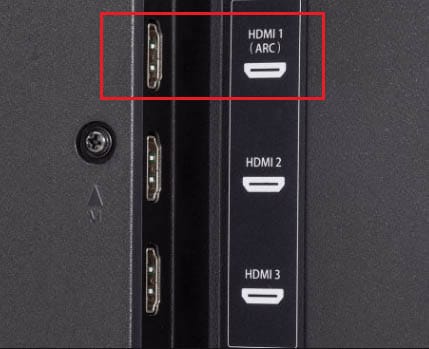
In addition, it also allows you to control most connected devices with just the TV remote.
ARC technology, along with CEC, can simplify your home theater system in two important ways. The first and most useful feature of HDMI ARC is the ability to use one remote for all the most common functions of your audio devices.
To do this, you may need to go into your TV’s settings and activate CEC, usually found in the general settings. Depending on what brand of TV you have, the CEC menu item may use brand-specific names (Anynet +, Bravia Sync, etc.).
When you watch a show on the TV from an over-the-air, cable, satellite tuner, the sound is sent to an external speaker via the hdmi arc connectors. And the same cable and connectors are used when transmitting video from the home receiver to the TV.
So we do not need to connect a separate cable to transmit audio from the TV to the speaker, the signal goes through the ARC. For a separate audio connection, we take an optical audio cable S/PDIF or digital audio RCA.
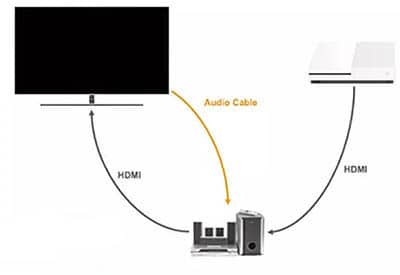
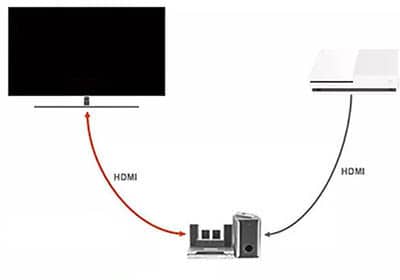
It is worth saying that the quality of signal transmission via HDMI is very high and it is recommended for all connections. And if there is an opportunity to transmit audio cable HDMI, you should take advantage of this.
But, many users do not need ARC. If you listen to sound mainly through the TV speakers and you don’t have a receiver or soundbar, then this feature is unnecessary. The point of ARC is to send the audio generated by or passing through the TV to an external audio device, namely a soundbar or receiver.
Video of the soundbar connection via the ARC channel to the Samsung TV:
The sound quality of the stand-alone speaker is better compared to the built-in TV. Therefore, it is advisable to purchase a soundbar and use the HDMI ARC channel for connection.
Example, if you connect many devices to the soundbar and the soundbar has only one HDMI input. You can connect all of your devices to the TV, and the sound will be sent to the soundbar through the TV. There is no need for additional audio cables.
You can find the connector on your TV by its appearance, it will be labeled “HDMI ARC” above it. The other, pluggable device should have a connector with the same designation. Only when two devices support this technology, then you can use the ARC function.
HDMI connectors on TVs can be labeled as STB, DVI, ARC, MHL. All of them are the same in functionality, except for MHL. But also ARC connector is used to return the sound, if there is such a need, but otherwise it works as usual HDMI. And here hdmi mhl combines the functionality of the HDMI interface and connector MicroUSB, is used to connect smartphones to TVs. MHL may not work for a regular hdmi interface.
What is eARC
Now let’s move on to eARC. This protocol was added to the HDMI 2.1 specification. But TV manufacturers could add support for it to the HDMI 2.0 standard. Therefore, eARC is much more common than HDMI 2.1, which spawned it.
In creating it, the HDMI consortium tried to lay down the maximum potential that would allow it to remain the dominant technology for years to come. If HDMI ARC is like a one-way street with a bike path along it, the increase in bandwidth to 48 gigabits makes HDMI 2.1 comparable to full two-way traffic. What does this mean?
- First, higher speeds, and in eARC it has reached 38 megabits per second, allowing up to 32 channels of compressed audio and as many as eight uncompressed with 24-bit, 192 kHz parameters. Welcome Dolby TrueHD and DTS-HD Master Audio, DTS:X.
- Second, TVs with eARC must have that “Bitstream pass-through” mode by default, which means you get the freedom to switch your system. You can connect the entire device to the TV and send one wire to the receiver. This is why many latest-generation soundbars have begun to do away with the built-in HDMI switch.
- Thirdly, there is no delay between sound and video, lip sync is finally made mandatory. Playing on TV has become cool.
- But the main difference and advantage of HDMI eARCs over classic ARCs is the creation of a separate data channel for eARCs. This allows direct communication between the eARC and compatible devices without activating the unstable HDMI CEC protocol. And this allows the devices to find each other and work with each other properly, automatically, without additional enabling or tinkering.
So, has HDMI eARC become the simple answer to all switching issues?
Recall that it came de facto with HDMI 2.0. Quote:
Currently, the HDMI Licensing organization has decided to remove all versions from the HDMI 2.0 specification and include them in HDMI 2.1. At the same time, all new HDMI 2.1 features are optional, and implementation is determined by the manufacturer.
Let me repeat that one more time. The decision to use HDMI capabilities is up to the vendor. In other words, the proud number 2.1 does not guarantee the consumer anything at all. Unexpectedly it turned out that LG and Samsung TV sets of the latest generations, equipped with 2.1 ports, do not support all versions of DTS.
But on the TV it says that it supports everything. Again, that’s a bit of a disappointment.
It turns out, like HDMI ARC, eARC has not become a perfect protocol that always and everywhere works well. It has certainly become better, faster, and more reliable. But I wouldn’t recommend using an HDMI switch built into your TV. Better let everything that can go directly to the receiver or soundbar go there directly.
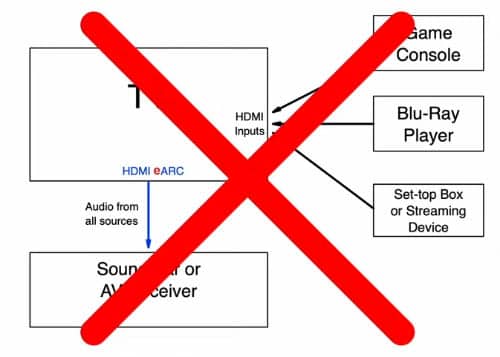
HDMI control has been less of a problem lately, too. So there is a chance that the system will finally become convenient.
An interface labeled eARC stands for Enhanced Audio Reverse Channel, with more bandwidth. This feature works with HDMI 2.1.
The new configuration requires eARC support from both your TV and your audio device, which means that both devices must support HDMI 2.1 – older versions of HDMI do not support eARC. You’ll also need an HDMI cable with Ethernet support, or newer ultra-high-speed HDMI cables that include Ethernet support.
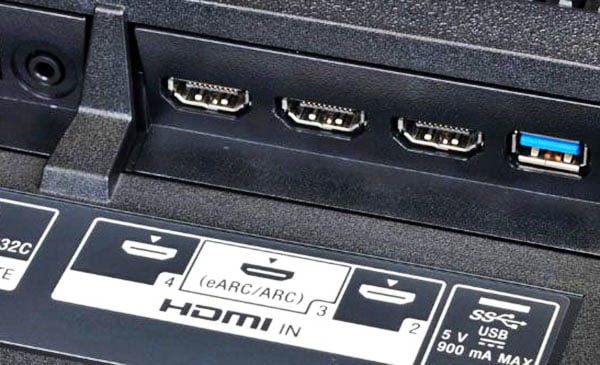
ARC and eARC HDMI Cables
Any cable for HDMI 1.4 and above will work with ARC. For eARC operation, you will need a high speed cable. This can be a standard HDMI to Ethernet cable or an Ultra High-Speed HDMI to Ethernet cable.
HDMI with Ethernet cables labeled Ultra High Speed support all HDMI 2.1 features, and definitely support eARC.
Differences Between ARC and eARC
Different equipment manufacturers are free to connect different protocols when transmitting audio over the ARC channel. Therefore, different equipment transmits different quality audio, with different audio codecs. It may be that the TV only supports stereo or Dolby Digital, but DTS or 5.1 Dolby Digital may not. There are no mandatory codec sets for transport.
But for transporting modern codec audio DTS-HD Master Audio, Dolby TrueHD, Dolby Atmos or DTS: X channel ARC is not suitable, here you need eARC.
With eARC, you can connect HDMI devices directly to your TV, and the TV will send uncompressed, high-quality sound to your soundbar, receiver, or amplifier directly through the eARC port.
You can output up to 32 audio channels using eARC. The eARC channel also supports 8-channel 24-bit/192 kHz uncompressed audio data delivered at a maximum rate of 38 Mbps.
Since the HDMI 2.1 specification offers faster data transfers with more bandwidth, it means that audio and video signals can be synchronized automatically. Were there any problems with video and audio sync when there were mismatches between the audio track and video? These problems have been eliminated with eARC.
Table comparing ARC and eARC channel capabilities:
|
|
ARC |
eARC |
|
Cable |
HDMI |
HDMI Ethernet |
|
Stereo |
yes |
yes |
|
Compressed audio 5.1 |
yes |
yes |
|
5.1 uncompressed |
no |
yes |
|
7.1 uncompressed |
no |
yes |
|
High bitrate & objects based on 192 kHz, 24 bit |
no |
yes |
|
Audio bandwidth |
1 Mbit/sec |
37 Mbps |
|
Video and audio synchronization |
optionally |
must |
|
Volume control, HDMI power on |
yes (CEC) |
yes (CEC) |
The eARC protocol will replace the CEC (Consumer Electronics Control) control option, which allowed you to control multiple devices simultaneously. CEC technology has always been supported in HDMI. A separate eARC channel now performs device detection and control.

